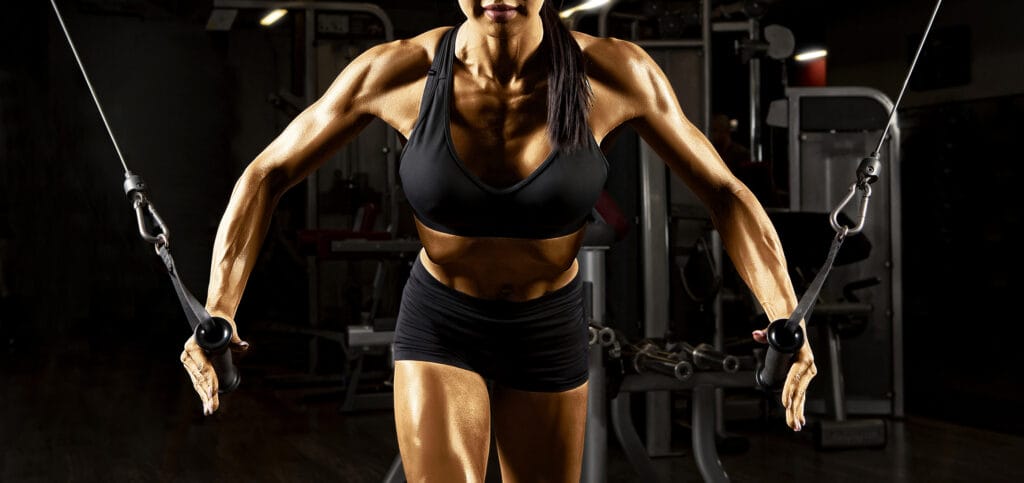
The good news is that Force’s All-In-One Trainer line up just got even more impressive; the bad news is that it’s gonna be even harder to decide on which model to go with now.
Force’s brand new C10 takes many of the popular functions that’ve made their other gyms systems so popular over the years and combines ’em with a few new features never seen before on a Force model.
The result is one of the most versatile home gyms to hit the scene in a long time.
Like Force’s other all-in-one trainers, at its core, the C10 combines the functions of a half rack, a Smith machine, and a functional trainer.
But unlike their other gyms, Force gave the C10 an additional central cable system, adding two additional upper cable attachments and two additional lower cable attachment for even more workout variety.
These additional cable attachments make lat pulldowns and low rows more convenient, but they also come with the added benefit of letting you switch between a 1:1 and 2:1 pulley ratio.
And considering the C10 comes with dual 220 lb integrated weight stacks, you’ve got a lot of resistance at your disposal here.
All things considered, the C10 has a lot to offer for folks looking for a combo gym that can do it all, but it certainly isn’t cheap.
Before you decide, you need to make sure this really is the right choice – and that’s where I can help.
In this comprehensive review, I’ll go over everything this gym does and doesn’t have going for it, but I’ll also talk about how the C10 compares to some of Force’s other gyms.
After reading, you’ll know whether or not the C10 is the right gym for your home gym.
Force’s C10 combines the functions of a half rack, Smith machine, and functional trainer into a single unit, but it also comes with two additional upper pulleys, two extra lower pulleys, dual 220 lb weight stacks, and is compatible with tons of attachments. Folks looking for a highly-versatile gym system will likely love it.
Force USA’s C10 All-In-One Trainer
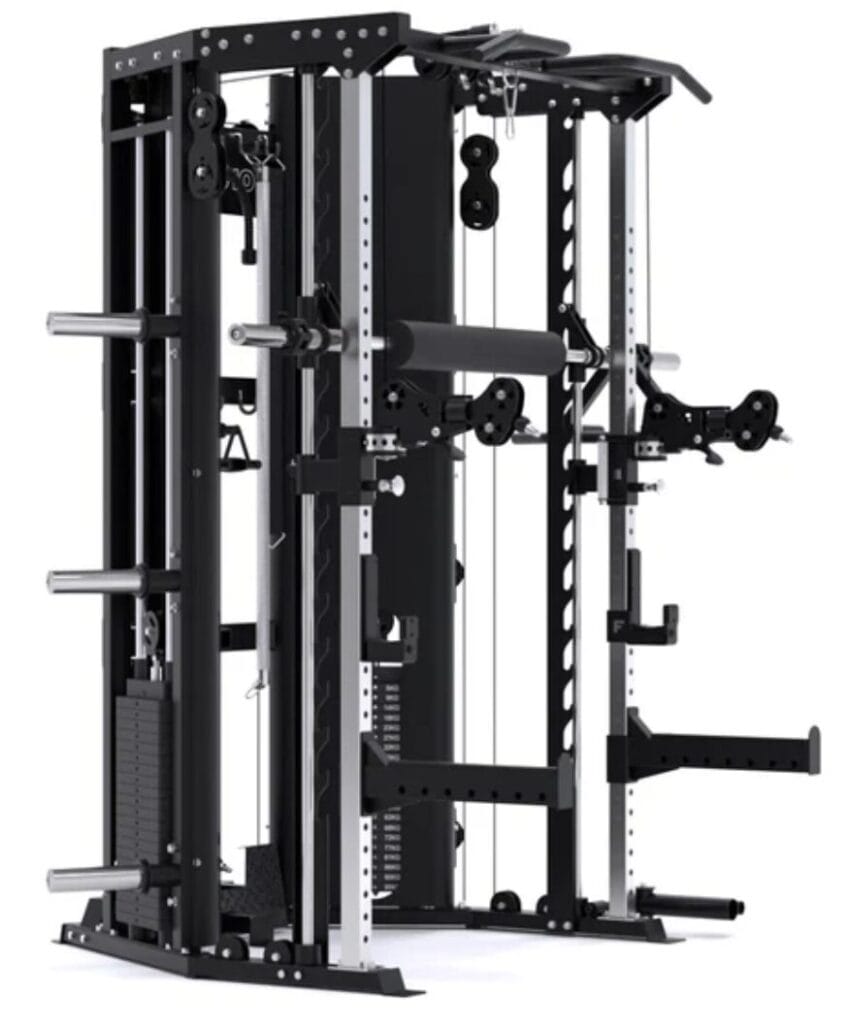
Force USA offers all kinds of lifting equipment and gear, but it’s there all-in-one trainers that’ve really put ’em on the map.
I actually have their X15 Pro in my home gym as we speak and I couldn’t be happier.
Heavy-duty, versatile, and smooth-acting…simply a bad ass gym system.
Anyway, Force offers several gym systems and they vary quite a bit in the features and specs they come with.
If you’re looking to save some cash, you can go with one of their plate loaded gyms, but you can’t beat the convenience the integrated weight stacks offer.
Anyway, the C10 we’re here to talk about now is their newest model and as I’m writing this is priced at around $4k.
Pros
- Combines power rack, functional trainer, and Smith machine
- Tons of workout variety
- 2 x 220 lb weight stacks
- Additional upper and lower pulleys
- Adjustable front pulleys
- 772 lb weight limit on Smith machine
- 992 lb weight limit on power rack
- 2:1 or 1:1 pulley ratio on upper/lower pulleys
- Lots of included attachments
- Landmine station
- Pull up bar
- Built-in low row plate
- Built-in leg press plate
- Weight plate storage
- Compatible with additional accessories
- Good warranty
Cons
- Involved assembly
- Bench/barbell not included
Frame
The C10 combines the features of a power rack, Smith machine, and functional trainer into a single unit and we’ll go over each station separately as we work through this review.
But before we do that, I wanna make a few observations about this gym as a whole.
For starters, I want point out that this is rather large, heavy machine with a lot going on.
More specifically, the C10 takes up a footprint of roughly 76.5″ x 51.5″ and that’s not counting the additional space you’ll need to actually use it.
So first things first, make sure you have enough room for this bad boy.
It’s also 87″ tall, so if you plan on doing pull ups, you’re gonna want to make sure you have at least 8′ ceilings for optimal safety.
It also has a shipping weight of just over 1,000 lb, so it’s a heavy-duty unit.
This is a great thing when it comes to using it, but just make sure you know exactly where it’s going before assembly because you won’t be moving it once it’s put together.
Just sayin’.

Power Rack
The first feature I wanna go over here is the power rack system.
Technically, it’s a half rack system, since there isn’t a complete cage, but you still get to perform all the same barbell exercises.
The rack on the C10 consists of two 2″ x 2″ uprights, each with 34 adjustment holes and laser etched numbering for easy adjusting.
The C10 comes with a 992 lb weight capacity, so it’s tough enough to accommodate even the strongest home-gymers out there.
You’ll notice that these uprights also house the adjustable pulleys used with the cable system – this means you may find yourself occasionally sliding the pulleys up out of the way to make room for your J-hooks.
Not a big deal, takes a few seconds.
By the way, the C10 does come with a pair of J-hooks and a pair of safety bars included, so you don’t have to worry about buying these crucial accessories separately.
That said, it doesn’t come with a barbell, so you do have to purchase one of those separately.
Overall though, the C10 comes with a heavy-duty half rack with tons of adjustment points, making it possible to perform any barbell exercise you need.
Smith Machine

The fact that the C10 comes with a Smith machine at all is pretty awesome, but it comes with a nice one at that.
And just to make sure we’re all talking about the same thing – “Smith machine” refers to the built-in barbell linked to the guide rails found front and center.
Smith machines are great because having the barbell hooked in makes for safer movements.
And the fact that you can lock the bar out every couple of inches allows you to lift confidently without a spotter.
Anyway, the Smith machine on the C10 comes with an impressive, 772 lb weight capacity, allowing it to keep up with lifters of all skill levels.
This bar is compatible with Olympic plates and comes with 17 lock out points, so folks of all heights should be able to find comfortable bar placements.
The last thing I want to mention here is that the adjustable pulleys actually act as the safety bars, meaning you don’t have to mess with adjusting a separate safety.
Simply adjust the pulleys where you need a safety bar and you’re good to go.
Very cool.
Overall, the C10’s integrated Smith machine is smooth-acting, easy to use, and designed to handle a ton of weight.
Functional Trainer
The last key component the C10 comes with is a functional trainer, which is really just the technical term for a set of adjustable pulleys.
Functional trainers are great because they offer so much workout variety, while being low-impact and safe to use.
Especially when they’re like the C10 and come with built-in weight stacks, so you don’t have to rack and un-rack weight plates.
More specifically, the C10 comes with 2x 220 lb stacks, so each pulley gets 220 lb to work with.
This is a lot of resistance, but we have to keep the pulley ratio in mind too.
Keep in mind that pulleys make lifting the weight easier (in most cases) and the ‘pulley ratio’ tells us how much the selected weight will actually feel like when lifting.
The front pulleys on the C10 come with a 2:1 pulley ratio, which means that you’ll be lifting half the weight racked (if you select 100 lb, it’ll feel like 50 lb).
A 2:1 pulley ratio is common, so this isn’t surprising – and 110 lb worth of resistance on each pulley is still a ton of resistance.
Each pulley can be adjusted vertically along 34 adjustment points and each front pulley can also be rotated and locked in place to create wider or narrower positionings.
This is an intriguing feature I’ve never seen before on home functional trainers, but it sounds great.
I could see it being especially handy when you need a larger range of motion during pec flys, but it could also be helpful in home gyms with limited space.
Overall, Force’s functional trainers are top notch and the C10 looks to have their most sophisticated version to date.
Additional Pulleys
The functional trainer refers to the adjustable front pulleys, but the C10 comes with additional pulleys, giving you more options than most other trainers.
Specifically, the C10 comes with a pair of central high pulleys (lat pulldown station) and a pair of central low pulleys (low row station).

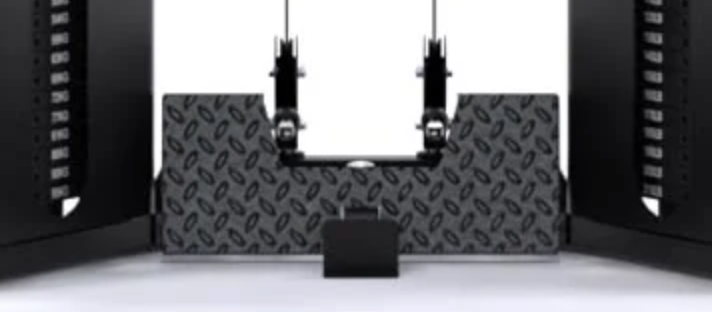
These upper/lower pulleys are attached to the same integrated weight stacks used for the front pulleys.
The pulley ratio for these additional pulleys though, depends on your setup:
- if you connect to both pulleys, you’ll be working with a 1:1 ratio
- if you connect to a single pulley, you’ll be working with a 2:1 ratio
This makes sense if you think about it – connecting to both upper or lower cables means you’ll be lifting both stacks at the same time.
This means you can take advantage of the full 220 lb of resistance for lat pulldowns or low rows (or any other exercise you’d want to do from these central pulleys).
The lower pulleys can also be used for additional exercises when combined with one of Force’s connected benches, but more on that below.
Overall, the additional pulley locations on the C10 add even more workout variety and convenience to this impressive home gym.
Attachments
Ok, time to talk attachments.
Force is known for being generous with their included accessories and the C10 doesn’t disppoint.
I don’t feel the need to copy every attachment down here because you can see the full list for yourself on Force’s site, but I do want to point out a few things here.
First of all, the C10 comes with all the J-hooks, safety bars, and collars you need to start using the power rack, so you don’t have to worry about purchasing any of these standard pieces separately.
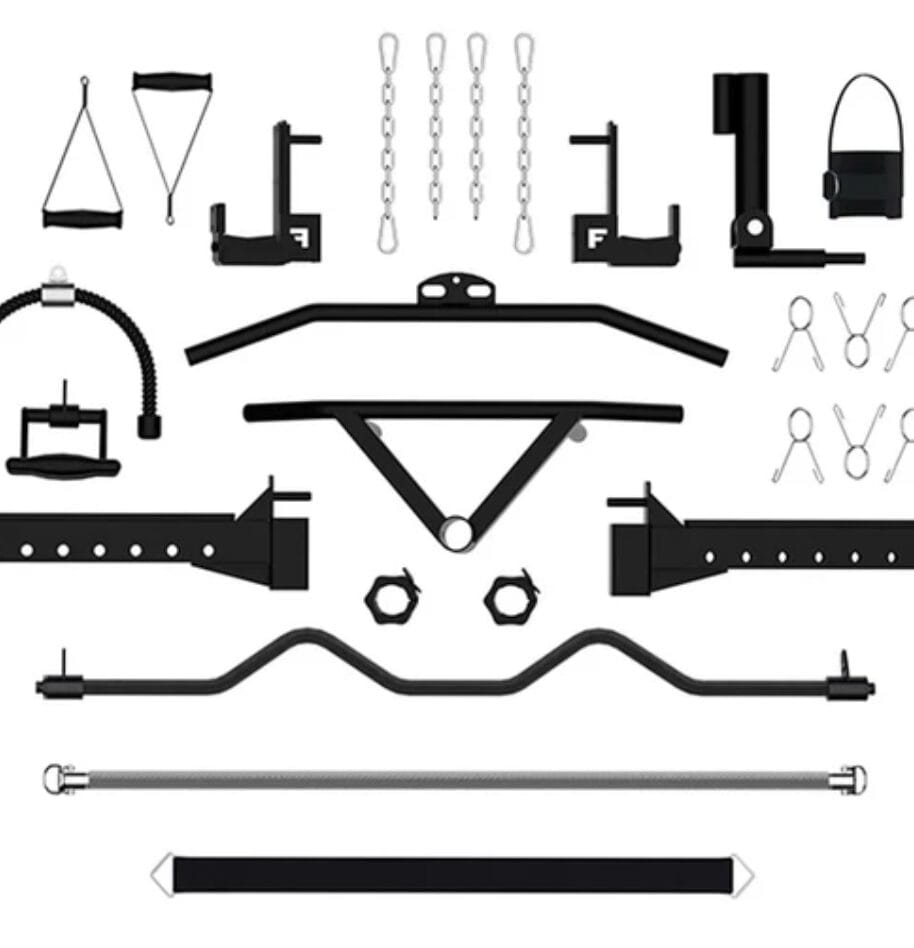
Force also includes all the most popular pulley handles, including the triceps rope, the close-grip triangle, a straight bar, and a pair of nylon handles.
A lat pulldown bar is included, but you should know that a bench/seat isn’t – so unless you like to stand during lat pulldowns, you’d have to invest in your own seat.
The C10 also comes with a landmine station that can be paired with a barbell for all kinds of great exercises.
I also want to mention that a barbell isn’t included either, so again, if you want to use the rack, you’ll have to provide your own.
Otherwise, I think Force is quite generous with their accessories – they include all the essential gear you’ll need to start using the C10 out of the box.
Oh, they also offer a lot of additional add-ons that can be purchased separately down the road as needed.
We’re talking things like jammer arms, dip handles, leg developers, etc.
The newest and most exciting addition to their attachments lineup though, is their sliding bench.
This bench can be used for traditional exercises (bench press and whatnot), but you can also unlike the pad and use the lower pulleys for leg press and hack squats.
And the built-in leg developer can also hook up to the lower pulleys for resistance leg extensions and hamstring curls.
This is a really cool feature, adding even more versatility to this system.
Additional nice touches include built-in plate storage, a built-in foot plate for low rows, a built-in plate for leg press, and built-in accessory storage.
And if you ever run out of inspiration regarding what to do with all these exercise options, don’t worry, Force offers a digital training app where you can access workouts.
Overall, it would be nice if the C10 came with a barbell or bench, but the accessories included are more than enough to get ya started.
Assembly
As you might guess, the assembly process for the C10 is pretty involved.
I mean look at it, there’s a lot going on here.
Personally, this is a home gym where I’d invest in professional assembly to make sure the job is done correctly.
Not to say it isn’t possible to assemble yourself – the process isn’t too complicated, but you have to be comfortable with following directions closely and confident in your cable routing skills.
Also keep in mind that the C10 is a big, heavy system, so if you do decide to assemble yourself, make sure you have some assistance.
Again, this is one situation where I’d opt for professional assembly.
Warranty
Force USA backs the C10 with the following home warranty:
- Lifetime frame
- 2 year moving parts
- 90 day upholstery
The lifetime frame guarantee is great, but if you read Force’s warranty info, they state that the lifetime structural coverage really lasts 10 years.
Ten years is still pretty good, but it would be nice if ‘lifetime’ really meant lifetime.
Two years for the pulleys and cables is pretty standard procedure and it matches what a lot of functional trainers offer.
The same goes for the 90 day upholstery guarantee, which is pretty average.
Overall, I think Force’s warranty for the C10 is pretty good.
Force’s C10 vs Force’s G6 and G12
| Force C10 | Force G6 | Force G12 | |
| Upper/lower pulleys | Yes | No | No |
| Weight stacks | 2 x 220 lb | 2 x 220 lb | 2 x 220 lb |
| Pulley ratio | 2:1 1:1 (upper/lower) | 2:1 | 1:1 |
| Attachments | Many | Many | Many |
| Sliding bench compatible | Yes | No | No |
| Price | ~$4000 | ~$3500 | ~$4500 |
Alright, that about does it for everything the C10 has to offer (and it’s a lot), but before we wrap things up here I want offer a quick comparison to two of Force’s other similarly-priced gyms.
The C10 is awesome, but they’ve got other great gyms too – so before you decide, it makes sense to check out their other options.
In term’s of price and features, the G6 and G12 are their closest comps to the C10.

The G6 is a little cheaper, usually coming in around $3500, and it’s pretty similar to the C10.
It too combines a half rack, Smith machine, and functional trainer into a single unit and it comes with the same dual 220 lb integrated stacks (2:1 pulley ratio).
The included attachments are a bit different, but the biggest difference here is that the G6 doesn’t come the central upper and lower pulley systems.
You can still do lat pulldown and low rows with the front pulleys (and an included leg press plate lets you do leg press with the Smith machine), but the convenience factor and available resistance isn’t quite as impressive.
The G6 isn’t compatible with the new sliding bench either.
There’s also the G12, which usually costs a bit more at around $4500.
The G12 is another all-in-one trainer with integrated weight stacks for the functional trainer and like the C10 and G6, it too comes with dual 220 lb weight stacks.
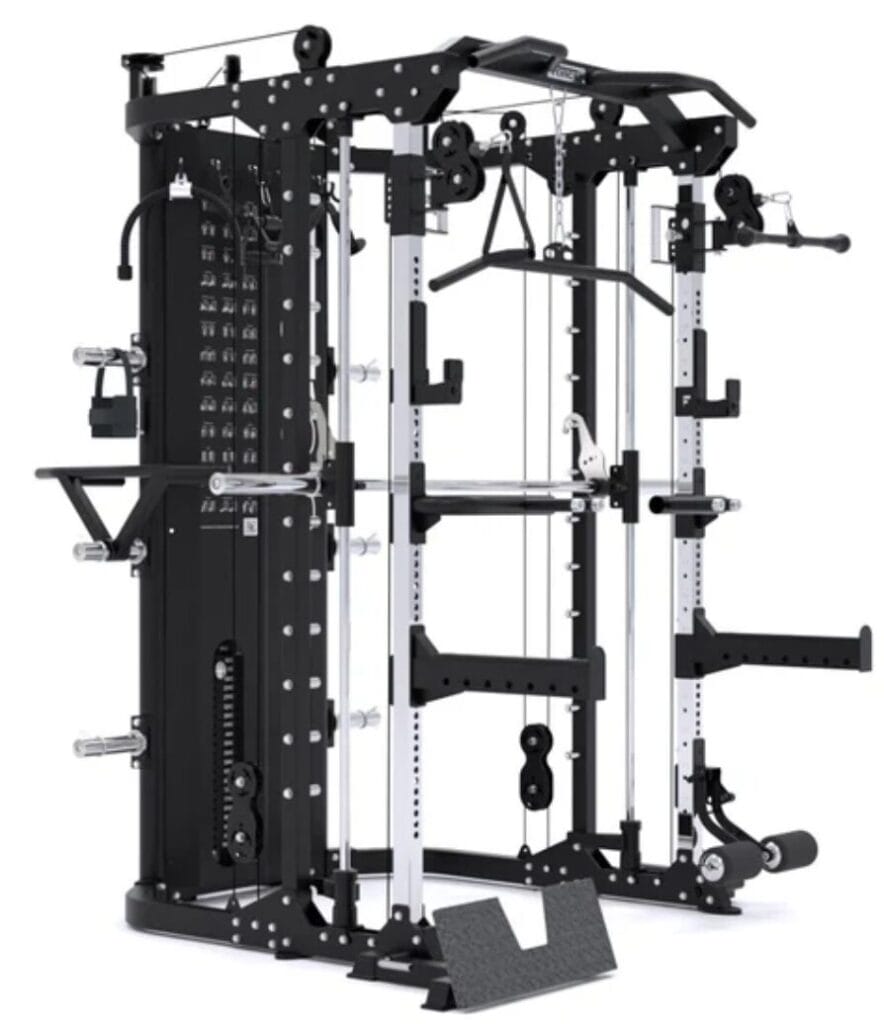
The difference with the G12 though, is that the adjustable pulleys use a 1:1 pulley ratio, meaning you get access to every pound on each stack.
With 220 lb at your disposal for each arm, the G12 can offer a ridiculous amount of weight.
Otherwise, the G12 is very similar to the G6 with regards to its accessories and exercise options.
And again, the G12 doesn’t come with the C10’s central pulley systems.
But if you’re a serious lifter looking for the most resistance possible from your functional trainer, the G12’s 1:1 pulley ratio might be worth the extra cost.
Final Thoughts
That about does it for the C10.
With as many all-in-one trainers as Force already has in their lineup, I didn’t think there was much room for improvement.
But it turns out I was wrong.
All of their home gyms are highly versatile and offer tons of workout options, but with the inclusion of the additional upper and lower pulley systems, the C10 takes it up another notch.
I also think it’s cool Force gave this trainer upgraded front pulleys that allow you to change the angle as well as the height.
Not necessarily a game-changer, but still a nice detail that’ll add to the overall experience the C10 has to offer.
When looking at the C10, there isn’t much to complain about here, but it would be nice if a lat pulldown seat or a bench of some kind was included with purchase.
Definitely not a dealbreaker though.
In terms of cost, I think the C10 is very reasonably priced, considering everything it offers and given the prices of the G6 and G12 mentioned above.
Overall, I think the C10 is possibly Force’s best buy at the moment; I’d by highly surprised if it doesn’t become one of their most popular gyms.
P.S. – don’t forget to use the promo code HOMEGYM5 for an extra 5% off!

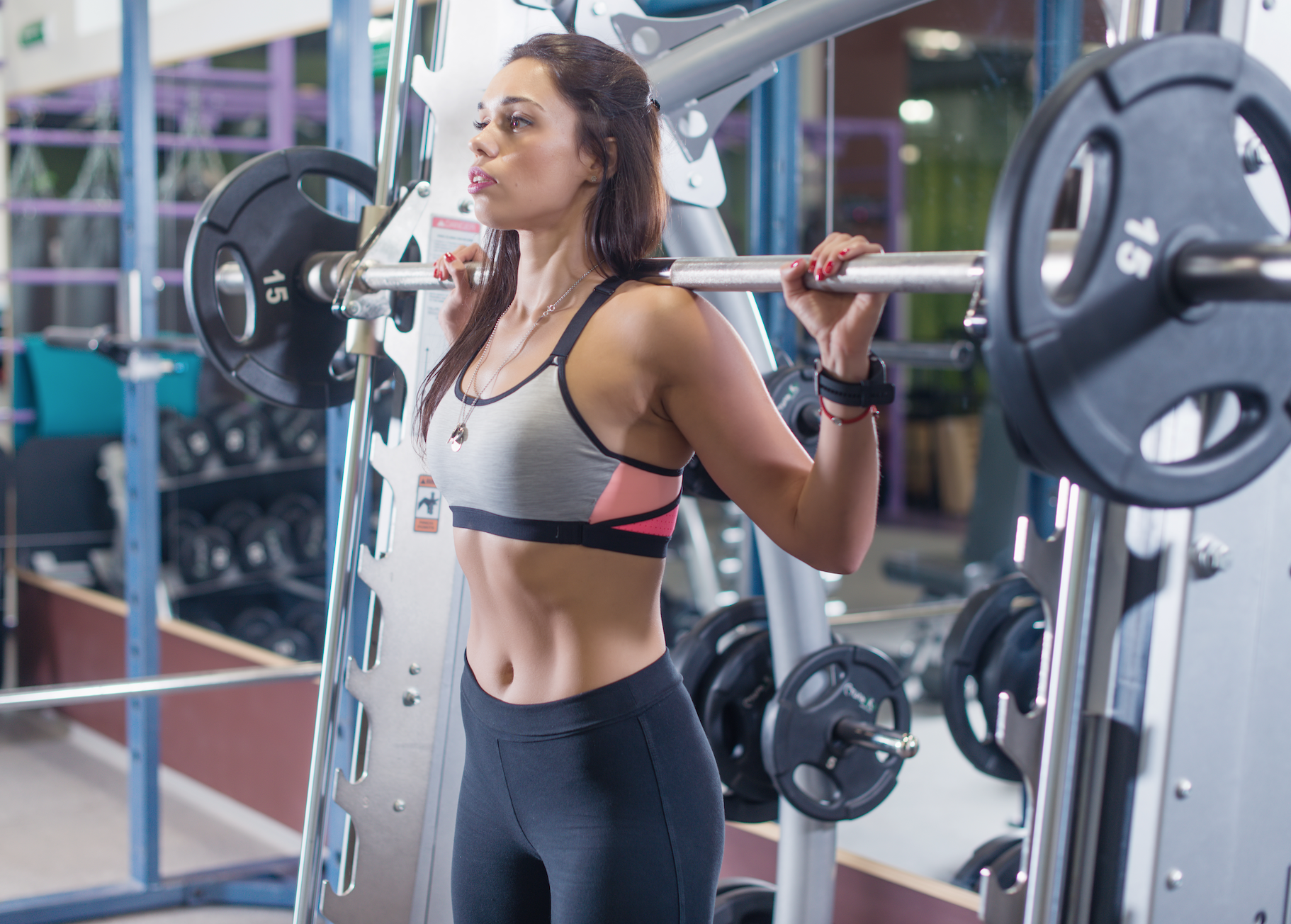
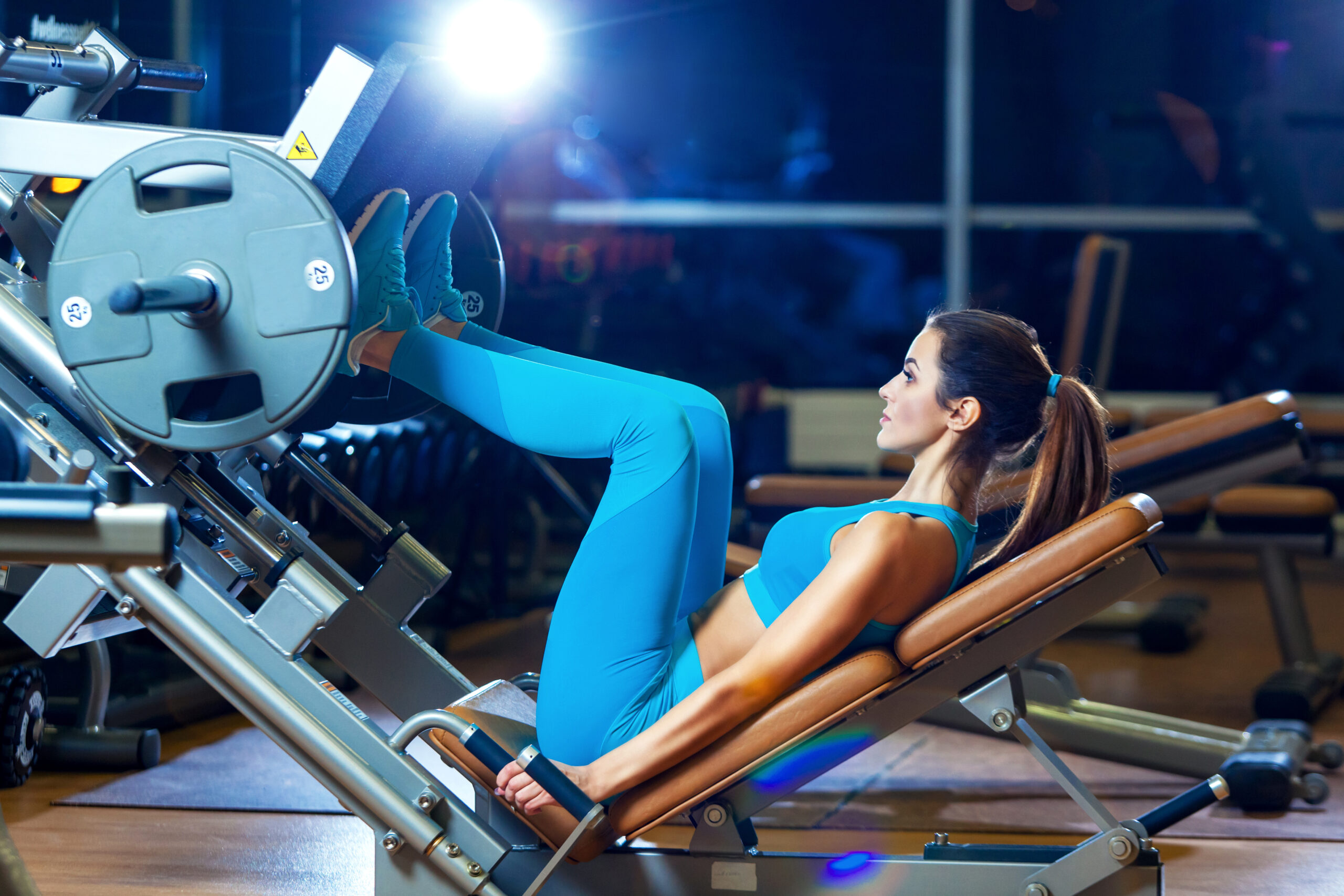
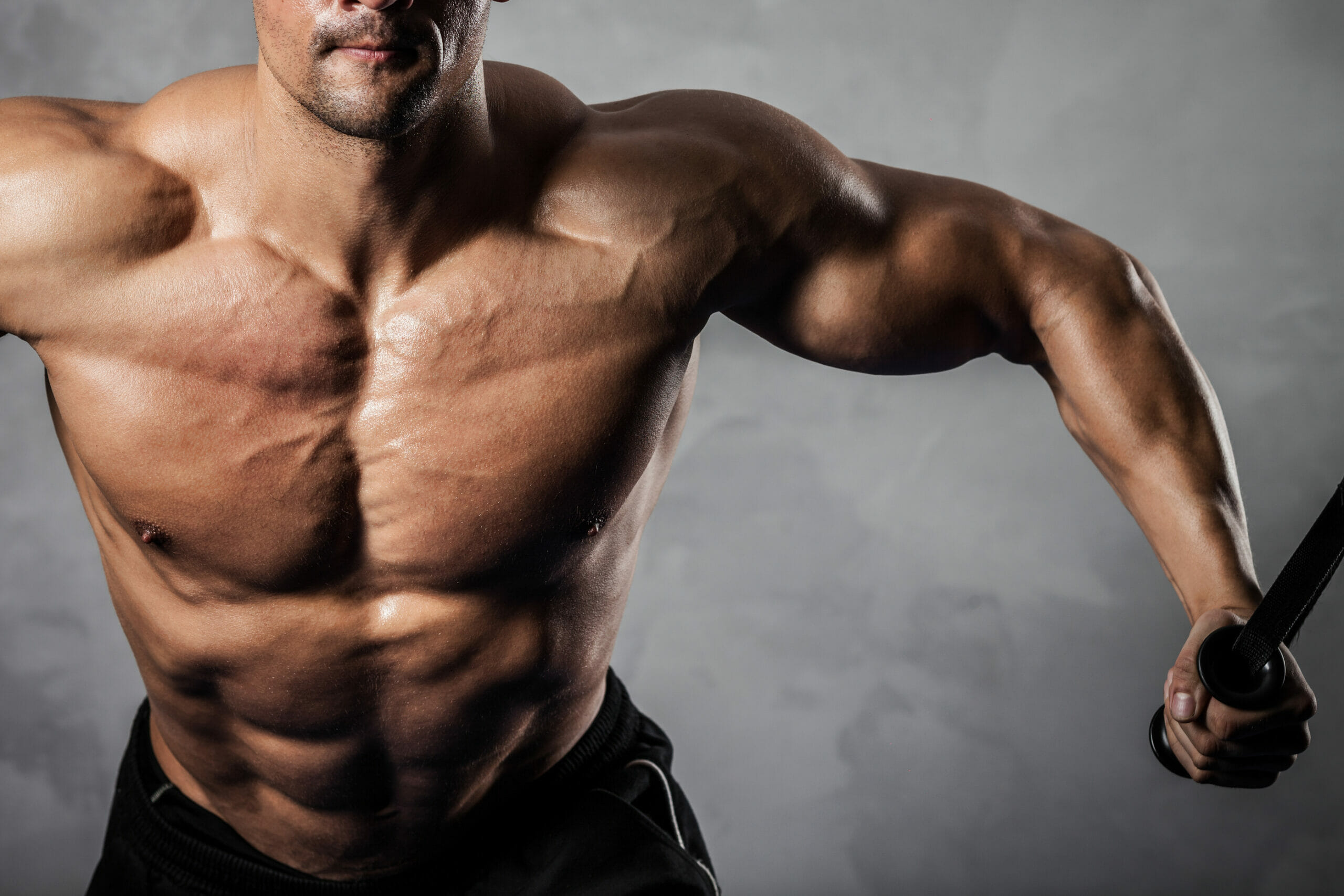
Looking for input or advice on how to take some of the noise out of the stacks rattling when using the Smith portion, it is way too shaky. I’ve determined that it’s actually the weight racks moving from side to side when I lift using the Smith machine. I’m not lifting huge weights, maybe 205 squat and 225 bench. But it’s pretty bad so I’m wondering if there’s any kind of stabilization that that can be done? Have done the obvious, lowering weight and focusing on form. Seems like the aforementioned weights are when the rattling occurs most noticeable. Have also checked to make sure it’s level, on a concrete floor with 1/4″ padding, and that all the bolts are tight but not overly.
Hmm, that’s interesting. Honestly, I’m not sure what else you could do – your best bet would likely be to reach out to Force’s customer service to see if they have any advice. Here’s a link to their customer service page. Good luck, I hope they can come up with a solution.